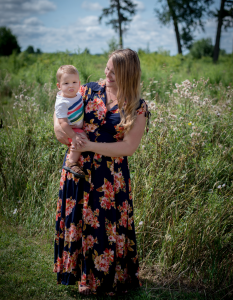
by Jessie Cooper | Dec 12, 2019
Last week I spent time going over your little (or big!) one’s developmental capabilities using neuroscience. I started to lay the framework for looking at how your child’s environment determines their behavior. It was a lot of information to digest and I get that. It took me years to really hone in on the science of behavior, then a few more years really applying it to get it. Having my own children helped me realize neurological abilities matter. I know that becoming a behavioral scientist and researcher when they grow up is most likely not every little girl’s dream. You’re probably thinking “yes, of course, you want the difficult behaviors to end, but how can you even start to apply ABA (applied behavior analysis) to your daily life?”
Just like everything else it starts with you, the parent. Now, I could jump into a long lecture about how all the challenging behaviors in our homes happen because we somehow reinforce them. That would make me feel miserable as a mom and I’m sure it would make you feel miserable too. We’re going to pass on that one. While there is some truth that we play a part in the behaviors our children engage in, what we’re really responsible for, first and foremost, is taking care of ourselves.
This sounds overwhelming when you’re raising young children, especially if you are raising exceptional children with different abilities like autism. In a case like that pretty much anything can happen within the span of a few minutes. This can be nerve-wracking! If you are taking care of a young child who is not meeting their milestones, another layer of worry may be added on. Whether your child isn’t walking, isn’t talking, won’t eat, or is showing some signs of autism, I know firsthand just how deep worry can sit in a mother’s heart. Daily worrying on top of trying to actually attend to the vivacious little someone in your life and you, yourself, may get lost.
Being the Best Parent You Can
But here’s the thing. Regardless of where you are in your parenting journey, you were perfectly designed to be this little someone’s mom (or dad). All the stress you carry and worries that overwhelm you come from being a good parent! If we let that stress and worry carry us, however, we can’t be our best selves. If we give in to stress, we can’t possibly be our best selves to our children. As parents, we need to be able to step away and find little ways to relax each day. After a while, we can add these little breaks up into a self-care routine so we can be our best selves to our children.
I know you’ve heard this phrase a million different ways, but you just can’t drive a car without gas (or electric!). In the same way, you cannot fully take care of your children the way you want to if you’re running on fumes. I can’t ask you to step back and neutrally observe your child’s behavior if your nervous system is so overloaded a dog barking will make you snap. So, before you start digging into this and ask yourself “what” about your child concerns you or “why,” first you need to ask, “what do I need to do this well?”
Help Your Family by Helping Yourself
It could be getting back into the gym, getting good food in, making time to call a good friend– heck, even going out with a good friend with no kids! It can be anything that makes you feel like you. Once you find what little things that make you feel at home with yourself, keep them up! Start building them into a little routine that you can follow regardless of what is happening in your home.
My routine is getting to the gym regularly, limiting sugar & processed food, seeing my friends with or without kids, talking to my sister, and carving out date time with my husband. Also, as an introvert, on any given day I need to excuse myself for 5-10 minutes to meditate or lay down to regain my energy. This doesn’t mean I’m meditating non-stop or that I’m out with friends every evening, but it does mean I know that in the thick of parenting these options are available to me for some ‘recharging.’
Once you are able to find a way to calm down that hot mama (or papa) nervous system and come home to yourself, things will become a little clearer. It won’t make life perfect but it makes it more manageable. For me, it even brings a bit of inner peace. In finding a way to take care of yourself you’re then ready to step back and start making calmer decisions about your children. From jumping into functions of behavior to making the difficult decision to get extra help or therapies, knowing that you’re making tough decisions from your authentic self will help. That’s the good stuff.
Xoxo,
Jessie

by Jessie Cooper | Dec 5, 2019
As a BCBA (Board Certified Behavior Analyst) I’ve heard a lot of criticisms about ABA (applied behavior analysis) therapy. I think the bulk of these criticisms come from the misunderstanding that ABA is a field full of “Super Nannies.” Many misinformed people think that as soon as you raise your hand and say you’re having a hard time with your child, an ABA therapist will swoop in with the ‘naughty step.’
People who are familiar with ABA often think of BCBAs as enforcers. I won’t lie to you, we are a consistent breed of people but it’s not because we seek to enforce. We are scientists seeking to understand. BCBA’s are interested in why behaviors happen, so we can improve the quality of life for whole families. It’s that simple.
Functions of Behavior in Children
Now, before we jump into functions of behavior, it’s important to take a side step and look at neurology and development. If you don’t know where your child is developmentally you can often expect too much (or too little) from them. Toddlers are all limbic system, meaning there is no logic in their tiny little bodies. When I learned this, a large weight was lifted off my shoulders. The prefrontal cortex doesn’t begin to develop until three or four years of age.
Going further; In women the prefrontal cortex fully develops by 18 years. In men it’s 25 years(sorry guys!). So, while we need to be consistent with our children, we also need to realize what they are capable of. There’s a way to do both, I promise.
For starters; yes, everything does happen for a reason. When we come into the world, we come with a unique personality and a set environment. It is the environment that shapes our behaviors.
In ABA we don’t seek to change who someone is. We want to bring out who that special someone is! If a person is tantruming all day long, however, it will exhaust both them and their parents. What is helpful is to show parents why certain behaviors are occurring, to remove the reinforcers around a particular behavior and teach a new skill.
Parenting to Avoid Bad Behavior
As parents, you and I get to decide what behaviors we don’t want our children to engage in. Your list is going to look totally different than mine, which is 100% OK, but how to approach it will be the same.
This approach is pretty simple, once you have your list of behaviors. With this list (my list includes spitting, hitting, and screaming), you’ll start to look for what came before the behavior (antecedent) and what came after the behavior (consequence). As you record this information, a pattern will most likely emerge to show you what your little person is trying to achieve with these behaviors.
Here’s a quick way to look for four functions:
Attention:
Parent is preoccupied. Behavior occurs. Parent gives attention by engaging or scolding their child.
Escape:
Parent asks their child to something. Behavior occurs. Parent gives in to the demand to avoid the behaviors.
Tangible
Child asks for item/activity and is told no. Behavior occurs. Parent gives in to said item/activity.
Automatic:
Physically your child has needs like is hungry, tired, or in pain, so you go ahead and help them!
Analyzing Your Child’s Behavior
Soon you will start to see what your child is after with their behaviors. For me, there is a ‘two-step’ because of my son Henry’s age (two years). For any child beyond the age of 4, the two-step just changes order.
Step one is to let Henry melt down while I provide a neutral, safe space for him to get his ‘Big Feelings’ out because he’s in his limbic system and is feeling unsafe. For us this looks like limited talking, modeling deep breaths, and big hugs if he’ll let me.
Step two is making sure he doesn’t get his desired consequence. For attention this would be, “Mommy is still busy cooking let’s set a timer and then I’ll play,” Then, for escape, this would simply be not letting him escape the demand, “Yes you still have to put pants on.” Or, for a tangible, it’s a “No you can’t watch TV, let’s make another choice.”
If Henry were four or older I would flip this and remove the consequence he wanted first and then talk about the Big Feeling after he calmed down. Because he can’t self-regulate yet, I feel it’s important to model this for him. I know other BCBA’s out there who would disagree (and they’re not wrong), but it’s what I feel works for me as a Mama.
Learn What Works For Your Child
I think we would all benefit a little more from a world that says “it’s OK to feel this way, but no, you can’t do XYZ,” vs. “your desires are wrong, get over it.” After his behaviors occur, I also work to teach Henry how to use his words, tolerance to the word ‘no,’ and how to wait. In my opinion, these are essential skills for anyone dealing with young children.
I know it’s a lot to digest. To think that every little thing your child does is to achieve an outcome in their environment is new and overwhelming. I hope that if you start applying the steps outlined in this article that relief is on the way. Seeking to understand your little someone doesn’t have an instant solution. And hey, maybe you’ll start understanding a little bit more about yourself.
Xoxo,
Jessie



